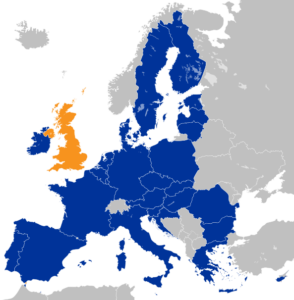Historical Background
European integration is a relatively new concept. The very first instances of practical multilateral diplomacy did not even start until the early 19th century in the Congress of Vienna which negotiations centered primarily on the Napoleonic Wars. The Congress of Vienna set the precedent for European international behavior up until the start of the First World War.
In more pragmatic terms, the history of the European Union itself did not begin until the 1950’s where various countries took active initiative to demolish barriers to facility trade and grow overall European prosperity.
- European Coal and Steel Community (ECSC) formed in 1951
- European powers sign Treaty of Rome; create European Economic Community (EEC) in 1957
- The Maastricht Treaty is signed, creating the European Union (EU) in 1993
- The euro is introduced and implemented as a currency to 12 countries in 2001
Thought the European Union was initially the result of an increased desire from European economic powers for a Regional Free Trade Area (RFTA), it has evolved into a loosely governing body with supranational oversight into areas far beyond the economic realm. The EU is able to regulate trade quotas, safety standards, and movement of people within the boarders of its member states.
The European Union is now at a crossroads: some wish to revert back to the primary goal of an RFTA and nothing more, and others want to increase centralized power to create a body such as “The United States of Europe.” The result of these two competing ideals is the embodiment of institutionalized dissonance. As Keynes would most likely recommend, the EU should pick one vision for the future and adhere to it in lieu of the current struggle to achieve both, which ultimately leads to inconsistent policies and confused member states.
